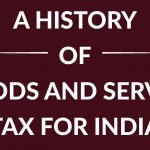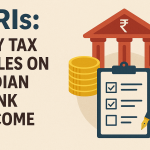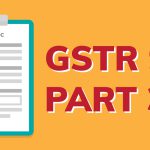Blog Post

by Madhav Joshi
Posted on June 5, 2019

BPO and KPO sector which comes under ITES is one of the fastest growing industries in India. India has more than 50% global market share in this sector. All the major towns like Bengaluru, Chennai, Hyderabad, Mumbai, Delhi, and Ahmedabad have become beacons of BPO/KPO sector.
While the impact of GST in other sectors is more prominent, it’s not in the case of BPO and KPO. The impact here is more towards export of services and for large companies that require such services. Let’s see what impact does GST has on this sector.

GST in BPO and KPO
Earlier, software maintenance activities were treated as works contract services. Thus, it was liable to service tax on 70% of the receipt, resulting in approximately 145% tax. Under the GST regime, such a situation would never exist as the supply would be either ‘goods’ or ‘services’
Largely, the BPO/KPO sector is to the levy of service tax only, which was 15%. Further, a significant portion of entities in this sector is engaged in export of services, the exposure to service tax is pretty minimal. Barring a few entities engaged in domestic sales of packaged/canned software, no VAT was paid by these entities.
Rate of GST
Overall services are taxed at 18%. This will have a negative impact on entities who are paying only ONE tax. Threfore, service tax will be benefited, where the effective rate of tax is between 20 to 22%.
Refunds and Working capital
The entities claiming the refund under the GST regime would see a greater cash blockage compared to the existing laws. As the input services received by the entities are currently taxed at 15%. This working capital blockage will be far worse for an STPI unit if the upfront exemptions, that the unit was hitherto availing under the existing laws, are withdrawn under the GST regime.
On the plus side, provisional refund of 90% of the refund claim has been provided for in the GST laws, which mandate a refund order to be passed within 7 days from the date of acknowledgement of refund application. It is for the first time that a time frame for processing of refund claims is being brought in as a statutory provision. Further, the time limit for filing of refund claims is fixed at 2 years from the relevant date, as against the time limit of 1 year under the existing service tax law. It remains to be seen how effective these provisions turn out at the ground level.
Cross charge
Cross charges and cost allocations between units of the same entity having separate GST registrations will be treated as ‘supply’ under the GST regime and will be liable to tax based on the location of the unit. While this provision is in line with the consumption-based taxation policy, the cause for concern is the fact that the valuation for such transaction will now have to be determined in line with the valuation rules, which require the open market value to be considered as a general principle. This is sure to open a Pandora’s box and will trigger tax disputes.
There are some topics of impact left to cover which we shall take in the next blog. Till then, keep writing to us your queries on GST and accounting, we shall be happy to help you.
846 Views 0 comments
GST to Change the Face of Warehousing

Cases when ITC is not available under GST

GSTR 9C – Part II

GST Audit/Reconciliation and Certification (Form GSTR-9C)

Taxation: History of Goods and Service Tax for India

Taxation of Indian Bank Account Income for NRIs: Key Rules and Guidelines

GSTR 9C – Part III

How your small pie of Tax builds the entire nation.

Aten Papers & Foam IPO Day 1: Check subscription status and other details

Brookfield-Backed CleanMax Set for ₹4,000–5,000 Crore Confidential IPO
Comments